How to care for an orchid and make it thrive all year long
Here’s how to care for an orchid in 5 easy steps
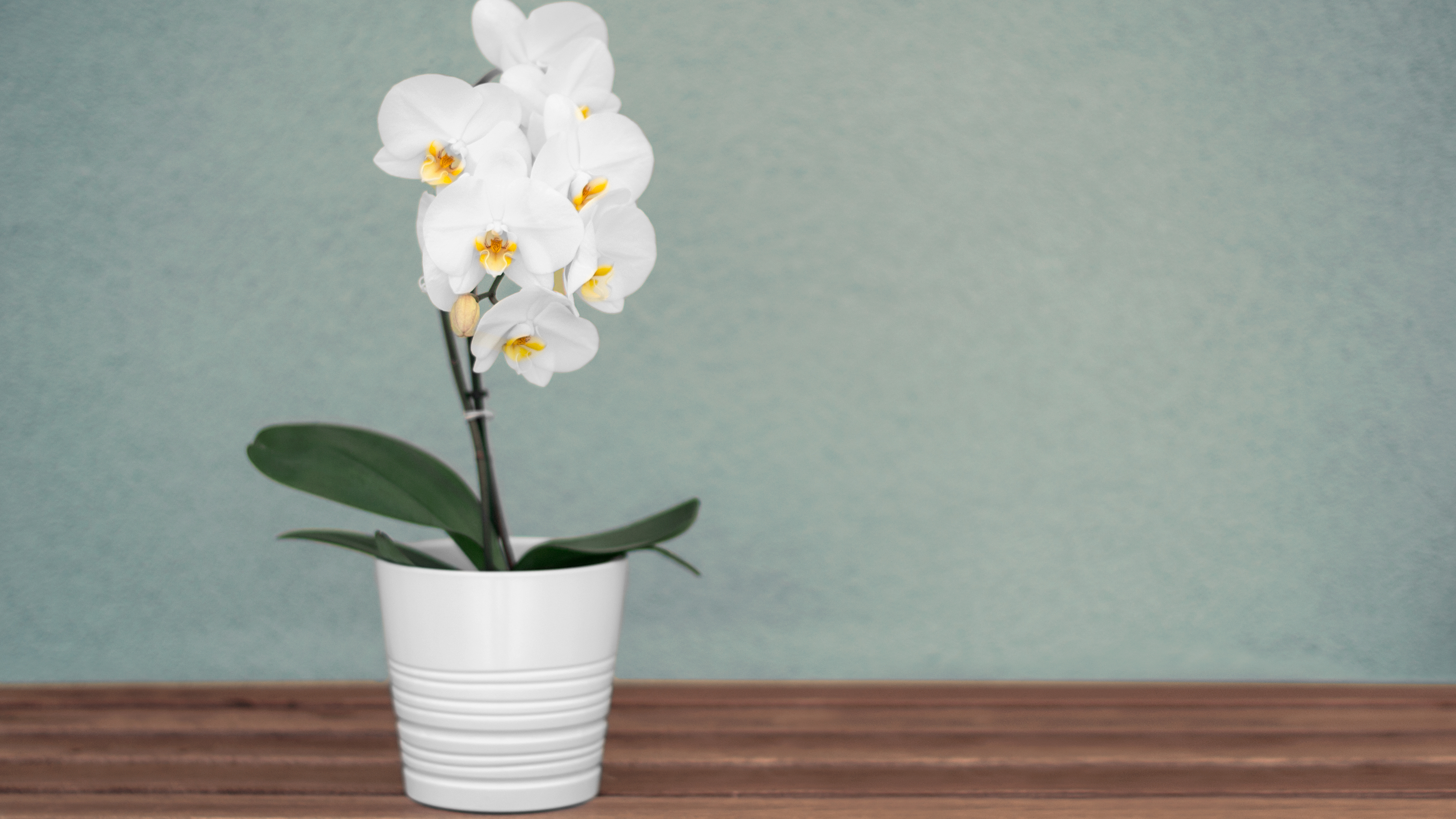
Orchids are a popular houseplant, available in different species and vibrant colors. And while they make a lovely feature to our home décor, knowing how to care for an orchid and make it thrive can seem tricky. After all, there are 7 mistakes to avoid when growing orchids.
Luckily, with the proper care and attention, learning how to care for an orchid is not that hard at all. In fact, if you keep an orchid healthy in the right conditions, it will continue to rebloom and look stunning. So before you give up on your precious orchid, follow these five tips on how to care for an orchid and make it thrive all year long.
If you have other houseplants that have seen their last days, try these 5 tips to save a dying plant before it’s too late or learn how to care for succulents.
How to care for an orchid
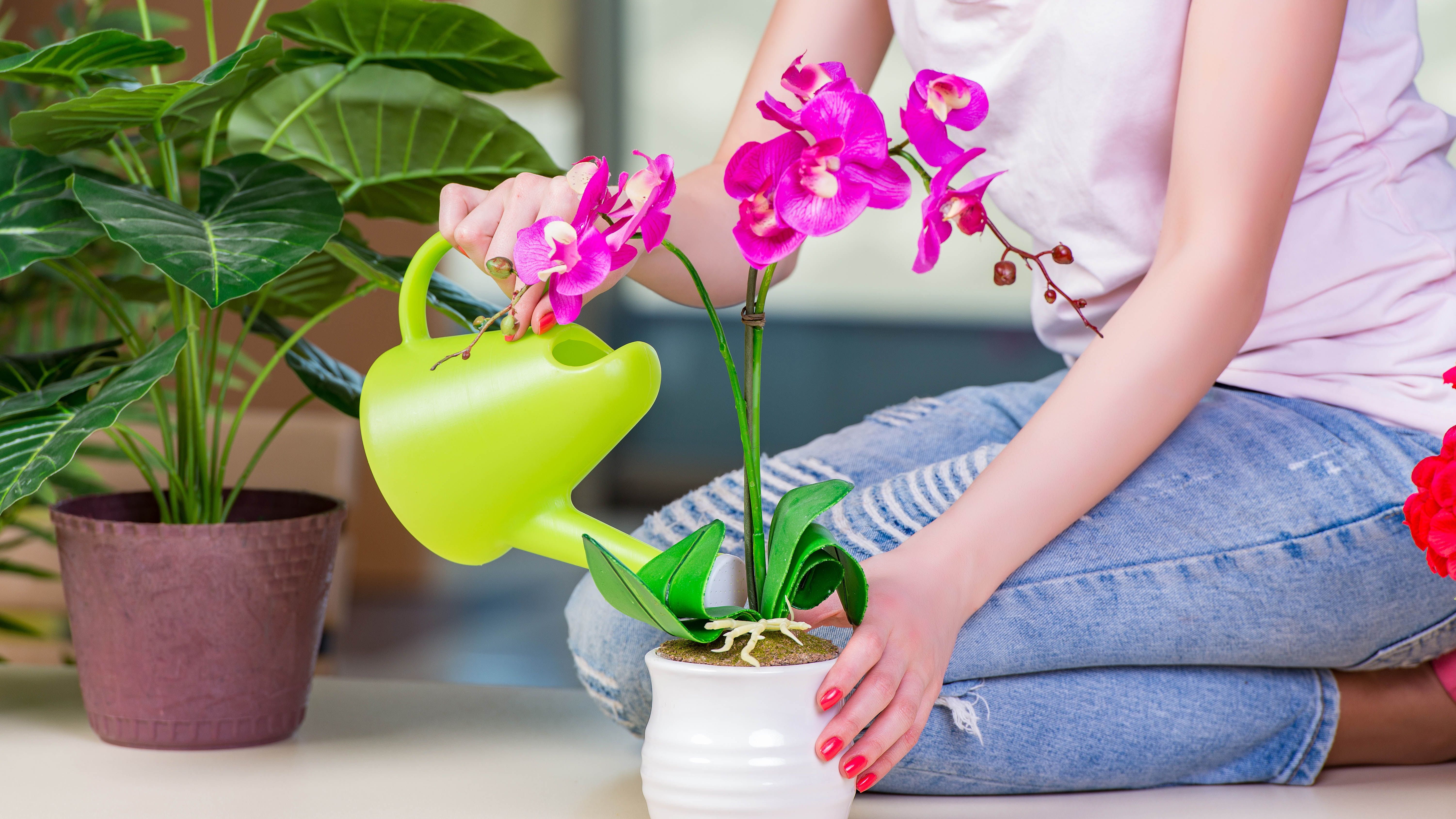
1. Water moderately — Most orchids don’t need much watering and will only require water once a week. Don’t pour water directly onto the plant but into the roots underneath the leaves. Avoid overwatering, as this is will lead to root rot, which will cause the plant to die. In addition, use pots with drainage holes to allow excess water to run out of the pot, with a saucer or drip tray underneath to catch it.
One way to check for watering is by poking your finger about an inch (2.5cm) into the pot. If the mix is dry, it needs water, otherwise, leave it alone. If you want something more precise, you can invest in a soil moisture meter like this XLUX Soil Moisture Meter ($12, Amazon).
TIP: Use small or medium sized ice cubes to water orchids. Ice cubes will avoid overwatering, improve absorption and avoid rot.
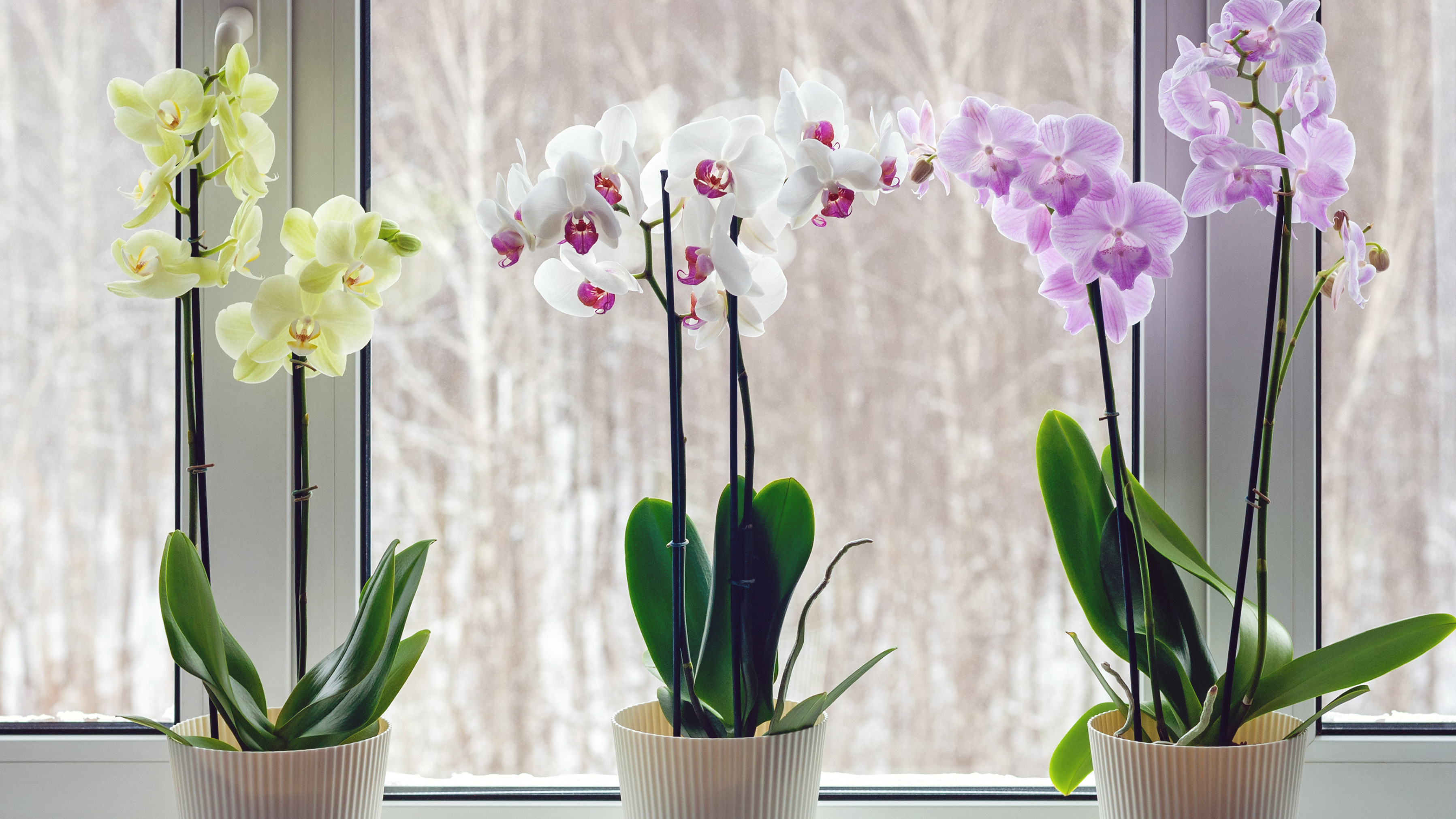
2. Place your orchid on a bright windowsill — Typically, orchids thrive in bright, but indirect light. If possible, place them near a south- or east-facing window to ensure they get the right amount and intensity of sunlight. It’s recommended that orchids should get at least six hours of indirect sunlight or bright shade a day. Similarly, orchids do best in moderate temperatures, and will die if they get too cold.
Get instant access to breaking news, the hottest reviews, great deals and helpful tips.
TIP: Never place orchids in direct sunlight as they will literally get sunburnt. Similarly, keep away from cold drafts and always maintain a constant temperature.

3. Mist orchids daily — Orchids do well in environments with 40-60% humidity. Spray an orchid regularly with a fine mist spray bottle up to two times a day depending on where the plant is located in your home. Other ways to increase humidity is to place a water-filled saucer or tray of pebbles beneath plants to help water evaporation. Or you can always buy a humidifier to place beside your orchids. Lack of humidity or insufficient misting can lead to falling flowers, stunted growth or brown-tipped leaves.
TIP: Avoid using tap water, and use either distilled or water boiled in the kettle. Typically, tap water contains impurities that will affect the growth of the orchid.
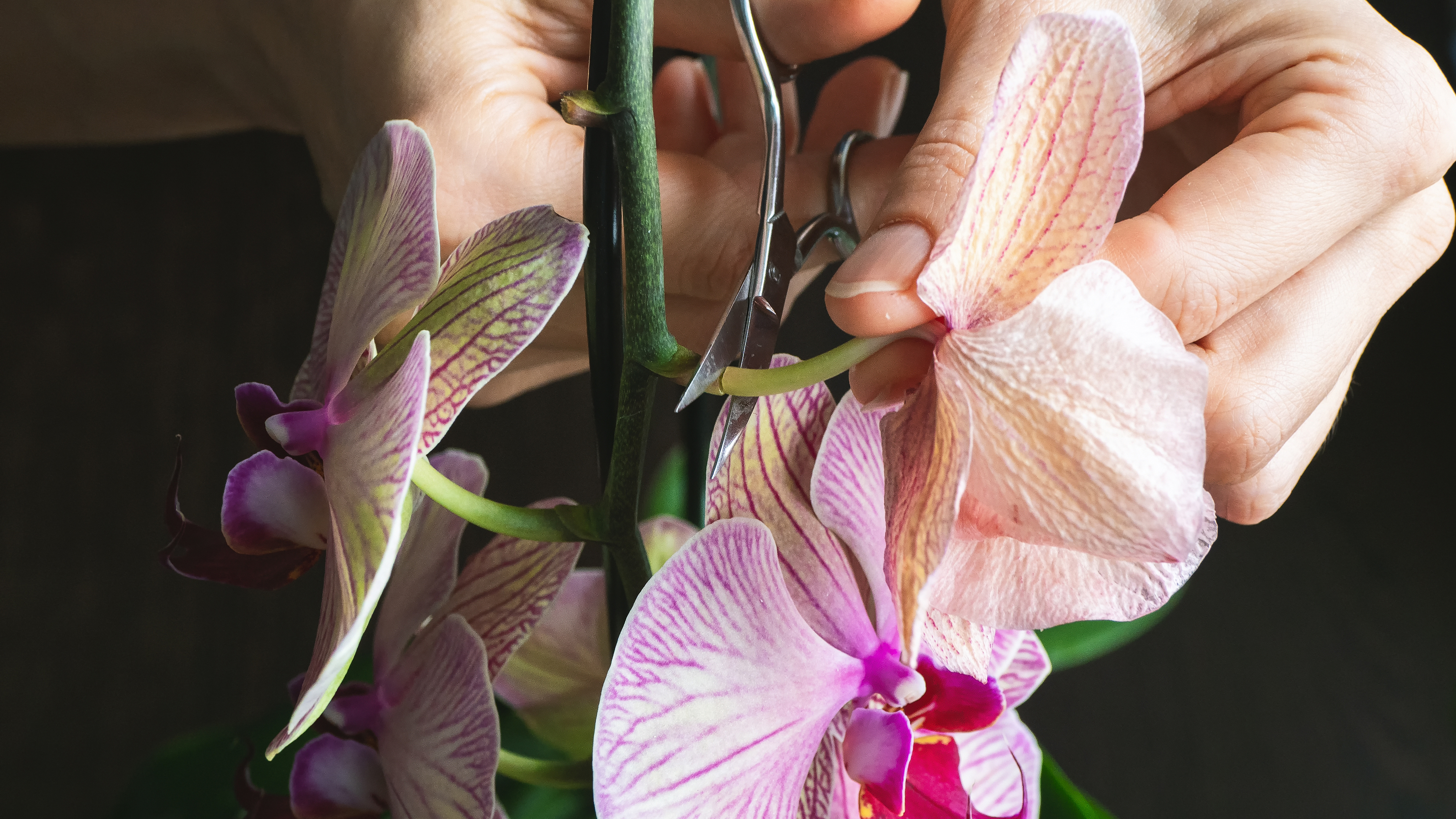
4. Cut back the dead stems — Prune or cut off brown stems once the flowers have died to encourage new shoots. Generally, orchids do not flower more than once on the same stem (the moth orchid or the Phalaenopsis are an exception). First, trim the stem just above the node where the first flower has bloomed. This should encourage a new shoot or shoots to grow to have more beautiful flowers for its next cycle. In addition, cut away any brown or diseased leaves that have spots on them.
If you want to know more pruning tips, you can read how to prune roses and when to do it or how to prune hydrangeas.
TIP: When you’re pruning, always cut diagonally in a 45-degree angle to allow for greater surface area. Also, make sure you disinfect gardening tools after cutting away infected plant tissue. This will prevent the transfer of further germs and disease.
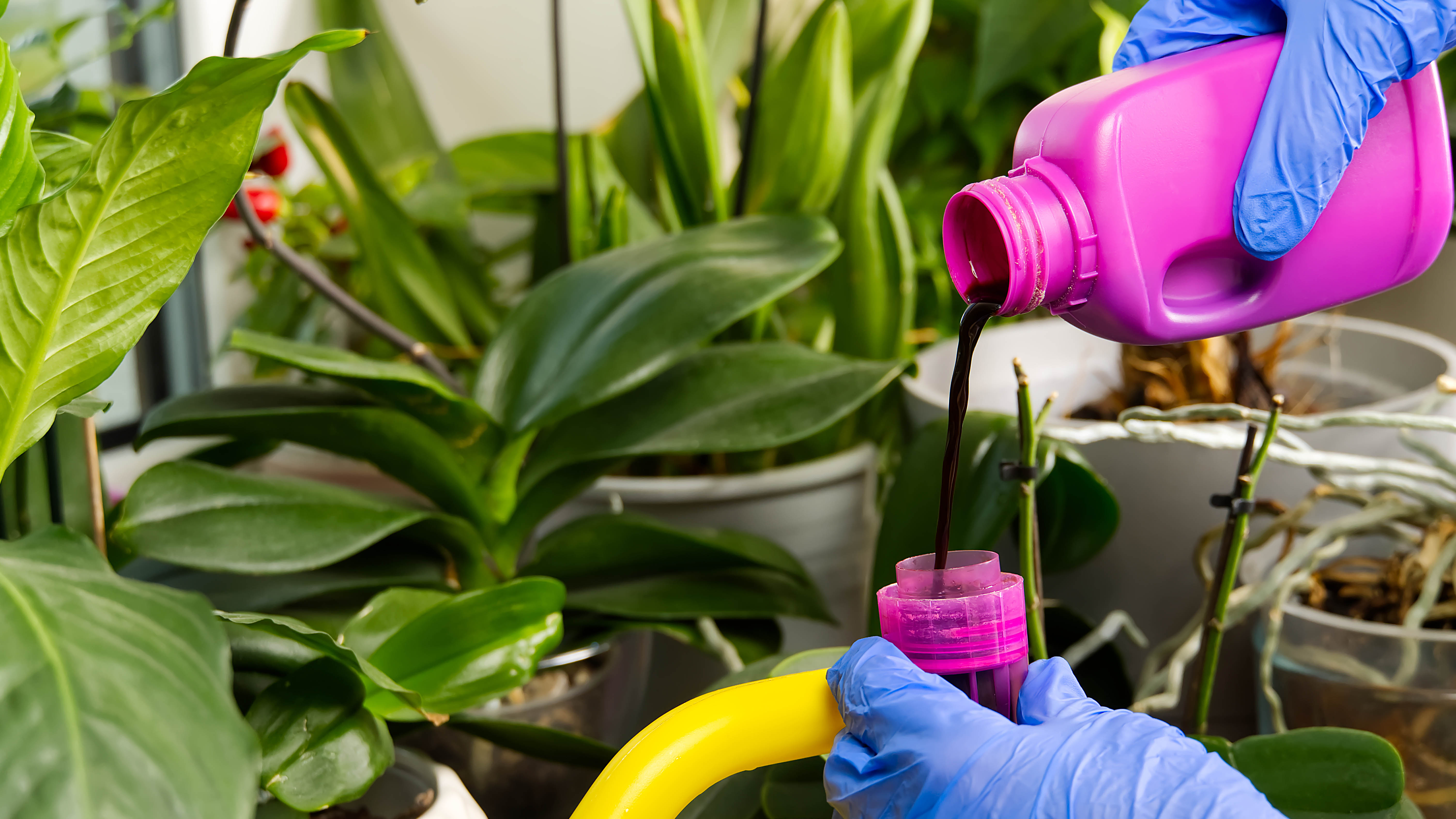
5. Fertilize the orchids once a month — Mix a ‘balanced’ liquid fertilizer, such as 10-10-10 or 20-20-20 to feed your orchids while they are flowering. This will provide all the right nutrients it needs to thrive. You can buy any orchid plant food from your gardening center, but always check the instructions before use.
TIP: Wait a few days to water your orchid after using a fertilizer, or else the nutrients will end up lost in the water.
When do you repot your orchid?
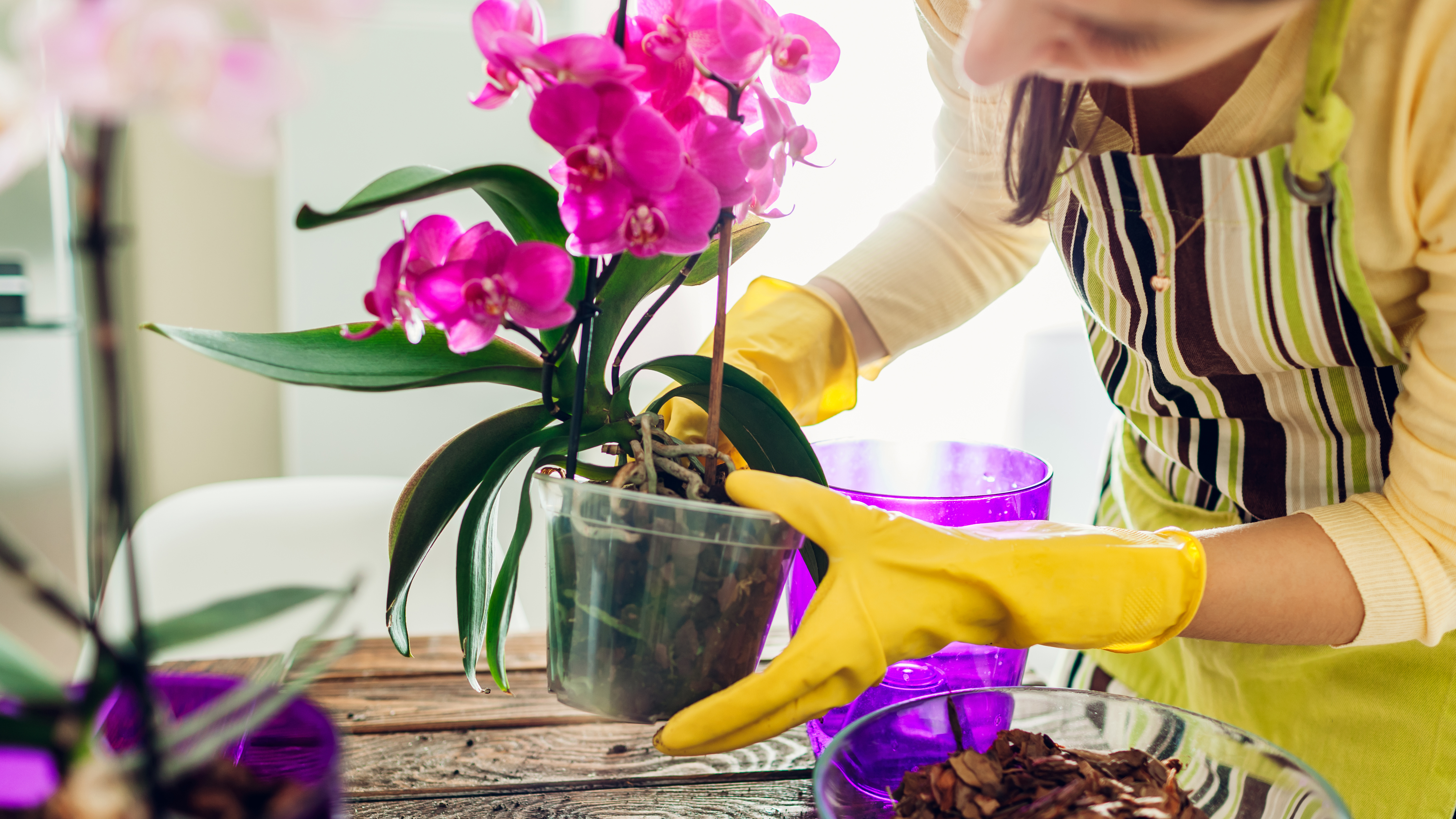
If you notice your orchid has suddenly stopped blooming but has all the right conditions to thrive, this means it may need repotting. Repot in a fresh orchid mix that contains special nutrients to promote healthy drainage and airflow.
Remember that orchids do not grow in dirt as it will smother their roots and kill it, so never mix soil and always go for an orchid mix.
Looking for more gardening tips? Check out our guide on 5 things to get your garden ready for spring. If you have allergies, you’ll need to know how to get rid of dust mites quickly. And, while you can use vinegar to clean your humidifier, here are 7 things you should never clean with vinegar.
Did you know orchids could keep down moisture levels inside a house and even prevent mold? Check out the 5 houseplants that will help prevent mold in your home.

As the Homes Content Editor, Cynthia Lawrence covers all things homes, interior decorating, and garden-related. She has a wealth of editorial experience testing the latest, ‘must-have’ home appliances, writing buying guides and the handy ‘how to’ features.
Her work has been published in various titles including, T3, Top Ten Reviews, Ideal Home, Real Homes, Livingetc. and House Beautiful, amongst many.
With a rather unhealthy obsession for all things homes and interiors, she also has an interior design blog for style inspiration and savvy storage solutions (get rid of that clutter!). When she’s not testing cool products, she’ll be searching online for more decor ideas to spruce up her family home or looking for a great bargain!
